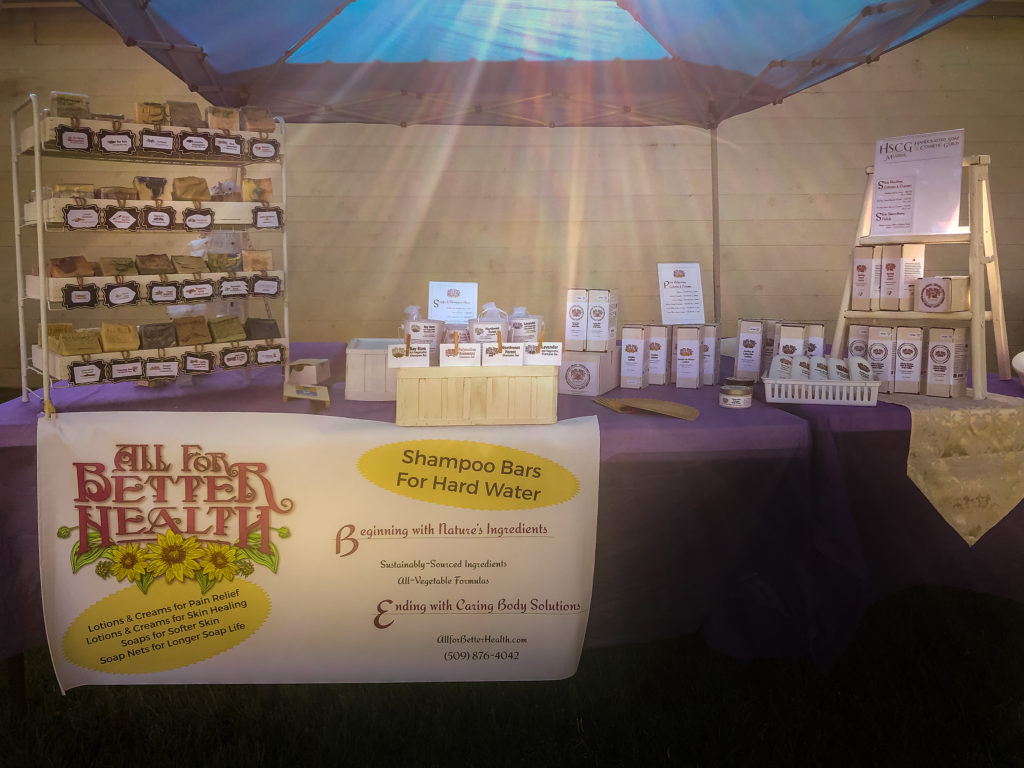
Moving to the Pacific Northwest and spending countless hours outdoors means that our family is no stranger to scrapes, scratches, and bug bites. These experiences have led me to become quite the homeopathic first aid kit aficionado. With so many products marketed as natural healers on the market, it can be tough to know which ones are actually worth your money. That includes arnica oil.
This flower-infused oil is one of those things that has been a staple in European home first aid kits for years. It’s also something that most people have never heard of until someone mentions it. (“What is arnica?” is one of the most common questions I get at Farmer’s Market.)
So what exactly is this oil? Let’s learn more about this useful skincare product.
What is Arnica Oil?
It’s usually an herbal oil infused with arnica flowers. It’s a very popular homeopathic remedy for bruising, muscle soreness and pain, and inflammation.
However, arnica may also be purchased as an essential oil (EO). You must use the EO form very carefully. It is a poison, so it should never be ingested or applied to the skin without being diluted.
Thus when you see arnica oil on the label, you’re usually looking at an infusion. This is a good thing. However, be aware. An arnica oil may contain anywhere from almost no arnica to 25%.
Unless you’re buying an arnica EO, the arnica oil you buy in stores always has additional plant oils mixed in to make the product safe.. These oils are the base for any arnica oil skincare product and can vary depending on the company producing the product. (We use an olive oil infusion.)
How Is Arnica Oil Made?
Arnica oil is made with the crushed and pressed flower. The flowers are harvested from the arnica plant and then sent to a facility to be ground down and turned into oil. The pressed flowers are mixed with carrier oils (like jojoba oil and coconut oil) to create the oil. The oils are then heated up to “activate” the flower’s healing properties, and then cooled to room temperature and put into bottles for sale.
Why Is Arnica Oil Good For You?
The active ingredient is Arnica Montana, a very potent anti-inflammatory. It’s used for a variety of conditions, including muscle aches, joint swelling and pain, and even bug bites and rashes.
The beauty industry has caught on to the healing benefits of arnica. The oil is becoming a staple in products like face serums, moisturizers, and even lip balms. (I’ll be producing an arnica lip balm soon.)
Arnica oil can be applied directly to the skin to reduce swelling, redness, and itching caused by bug bites, rashes, sunburn, and other irritations. It can also be applied on small bruises and scrapes to help them heal faster and with less pain.
Where Can You Find Arnica Oil?
While you may find this oil in the skincare section of most major retailers, I prefer to purchase my oil directly from the people who make it, or buy the dried flowers and make my own infusion. Someday I hope to hit the mountains of Montana to pick my own arnica flowers. (It takes at least six weeks to infuse a batch, so purchasing the ready-made oil is my usual choice.)
It was my dissatisfaction with the arnica lotions at Natural Grocers that send me on the adventure of making my own. I like a lotion that doesn’t feel sticky (and so does my husband). And while there are many oils that are good for the skin, I’ll continue to use olive oil as my carrier oil for the arnica. The squalene in the olive oil offers additional support to skin health and healing. And it’s a very stable oil. It’s slow to go rancid.
What’s The Catch?
There are a few. Arnica oil is generally safe and side-effect free in concentrations below 33%. However, WebMD warns that “When taken by mouth it can cause vomiting, heart damage, organ failure, increased bleeding, coma, and death.” They go on to say, “When applied to the skin: Arnica is possibly safe when applied to unbroken skin, short-term. But it is likely unsafe to apply arnica to broken skin because it can be absorbed into the body.” [Source]
Thus, never apply arnica products to an open wound without a doctor’s careful supervision. It could kill you.
Additionally, talk to your doctor if you’re pregnant, breastfeeding, or have a medical condition like asthma that makes you sensitive to certain smells before using arnica. Arnica doesn’t bother me, but I gather some people find it causes bronchial spasms when they smell it.
Anecdotal experience suggests even people with sensitive skin can use arnica oil, as long as they choose a brand without other irritating ingredients in the formula. There are no long-term risks or negative side effects of using arnica oil, making it a perfect addition to any first aid kit.
You can find arnica in almost any skincare product, from lip balms to serums. If you want to add arnica to your skincare routine, look for products with a 3% mix of arnica oil. If you want to add arnica to your first aid kit, buy the 100% pure oil and then dilute it to 12 to 33% concentration.
Avoid arnica products labeled as homeopathic. There are no active ingredients left in the product.
Conclusion
Arnica is a potent herbal remedy used to soothe pain, swelling, and inflammation. It’s commonly used in skincare products to help reduce the appearance of redness, sun damage, and small blemishes and scars. (I have friends who swear my arnica, hemp and lavender lotion has helped their hands heal overnight from the scratches they’ve gotten while picking blackberries.) It’s a safe and effective treatment for all types of skin issues.
Arnica’s only known side effects are when applied to broken skin. So use cautiously if you have deep cuts.




